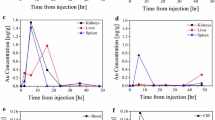Abstract
To address the problems with brain drug delivery we aim to deliver the large molecular weight drug into the brain by opening intercellular junctions (e. g. tight junction) of blood brain barrier (BBB) using cold atmospheric plasma (CAP). The CAP produces reactive oxygen and nitrogen species (RONS) that include hydroxyl (HO•), superoxide (O2•−), peroxyl (ROO•), nitric oxide (NO•), ozone (O3), hydrogen peroxide (H2O2), and singlet oxygen (1O2). In this study, BBB cell model containing endothelial cells, pericytes and astrocytes was purchased from pharmaco-cell company Ltd. (Japan) and cultured using DMEM medium on 24-transwell plate. Upon confluency of the cells, fluorescein isothiocyanate dextran (FD-4) drug was added, and plasma was applied to the culture. The plasma Jet was prepared as follow (carrier gas: Argon, gas flow: 3 L/min, irradiation time: 60 s, irradiation distance: 20 mm, voltage: 2.2 k Pp., frequency: 10 kHz). After 1 h incubation at 37 ºC with 5% CO2, trans-endothelial electrical resistance (TEER) was measured. The TEER value was reduced in plasma-treated cells compared to non-treated cells. It indicates that this plasma condition produced reactive species (RONS) that are involved in breaking proteins of intercellular junction. Because the lower the TEER value, the more permeability in the intercellular junction. FD-4 drug was added to the apical part (insert) of trans-well plate, and after plasma treatment with 1 h incubation, florescence intensity was measured from the basal side. The higher florescence intensity was detected in plasma treated cells compared to non-treated cells. This result may provide a valuable insight into a new strategy for brain drug delivery.
Access this chapter
Tax calculation will be finalised at checkout
Purchases are for personal use only
Similar content being viewed by others
References
Wu, D., Chen, Q., Chen, X., et al.: The blood–brain barrier: structure, regulation, and drug delivery. Sig. Transduct. Target. Ther. 8, 217 (2023)
Kadry, H., Noorani, B., Cucullo, L.: A blood–brain barrier overview on structure, function, impairment, and biomarkers of integrity. Fluids Barriers CNS 17, 69 (2020)
Luissint, A.C., Artus, C., Glacial, F., et al.: Tight junctions at the blood brain barrier: physiological architecture and disease-associated dysregulation. Fluids Barriers CNS 9, 23 (2012). https://doi.org/10.1186/2045-8118-9-23
Pardridge, W.M.: Drug transport across the blood-brain barrier. J. Cereb. Blood Flow Metab. 32(11), 1959–1972 (2012)
Yao, Y., Chen, Z.-L., Norris, E.H., Strickland, S.: Astrocytic laminin regulates pericyte differentiation and maintains blood brain barrier integrity. Nat. Commun. 5, 3413 (2014)
Brightman, M.W., Reese, T.S.: Junctions between intimately apposed cell membranes in the vertebrate brain. J. Cell Biol. 40, 648–677 (1969)
Lloyd, G., Friedman, G., Jafri, S., Schultz, G., Fridman, A., Harding, K.: Gas plasma: medical uses and developments in wound care. Plasma Process. Polym. 7, 194–211 (2010)
Shimizu, K., Hayashida, K., Blajan, M.: Novel method to improve transdermal drugdelivery by atmospheric microplasma irradiation. Biointerphases 10, 029517 (2015)
Shimizu, K.: Biological effects and enhancement of percutaneous absorption on skin by atmospheric microplasma irradiation. Plasma Med. 5(2–4), 205–221 (2016)
Kim, S., Chung, T.: Cold atmospheric plasma jet-generated RONS and their selective effects on normal and carcinoma cells. Sci. Rep. 6, 20332 (2016)
Thiel, V.E., Audus, K.L.: Nitric oxide and blood-brain barrier integrity. Antioxid. Redox Signal. 3(2), 273–278 (2001)
Acknowledgement
This work was supported by JSPS KANKENHI grant numbers JP23K17473 and by the Shizuoka University Interdisciplinary Fellowship for Medical Photonics.
Author information
Authors and Affiliations
Corresponding author
Editor information
Editors and Affiliations
Rights and permissions
Copyright information
© 2024 The Author(s), under exclusive license to Springer Nature Switzerland AG
About this paper
Cite this paper
Jahangir, A.M., Kristof, J., Sadiq, A.H., Rimi, S.A., Okada, T., Shimizu, K. (2024). Brain-Drug Delivery Through Intercellular Junction of Blood Brain Barrier (BBB) Using Cold Atmospheric Plasma. In: Ono, Y., Kondoh, J. (eds) Recent Advances in Technology Research and Education. Inter-Academia 2023. Lecture Notes in Networks and Systems, vol 939. Springer, Cham. https://doi.org/10.1007/978-3-031-54450-7_13
Download citation
DOI: https://doi.org/10.1007/978-3-031-54450-7_13
Published:
Publisher Name: Springer, Cham
Print ISBN: 978-3-031-54449-1
Online ISBN: 978-3-031-54450-7
eBook Packages: Intelligent Technologies and RoboticsIntelligent Technologies and Robotics (R0)




